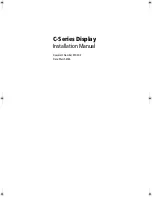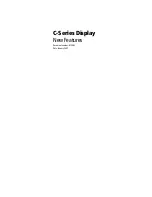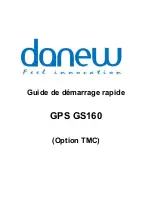
LX5000 March 2002
page 37
3.3
Variometer
All analogue signals of LX5000 (altitude, speed) are derived from high quality pressure sensors which means no flask is
necessary. The vario signal is derived from the altitude signal. All signals are temperature compensated. Vario and speed
signals are altitude compensated as well. A special device based on LCD has been developed for the vario indicator. Not
only vario, but also a lot of additional information is displayed on the unit. The unit is programmable, that means the
pilot is able to preset which information is important for him.
3.3.1
Vario
•
range 5,10 and 2.5 m/s 10,20 and 5 kts
•
five time constants 1s to 5s
•
netto vario
lift or sink of air mass only
•
Relative Vario
lift or sink during circling (does not depend on speed)
To compensate the vario there are two ways. The electronic TE compensation based on speed changes with time and the
compensation with TE tube works the mechanical way. Using tube, the LX5000 has absolutely
no influence on
compensation.
The quality of the signal depends on location, size and dimension of the tube. The installation must be
leak-proof.
IMPORTANT!
To use electronic compensation connect TE
-Pst onto the static pressure source of the glider
To use TE-tube
connect tube to TE-Pst
3.3.2
Altimeter
The altimeter of LX5000 is temperature compensated from -20ºC up to + 60ºC. the altimeter is calibrated from 0 to
6000m, but indication goes up to 8000m. The displayed altitude is always NN (QNH) after correct input of airfield
elevation (set alt.) after switching ON, otherwise it is 1013hpa.
3.3.2.1
IGC barogram recalibration procedure
The IGC variant of LX5000 has an additional pressure sensor for altitude recording. The sensor has no outlet, (FAI
regulation) that means it is not available from outside. To follow the procedure it is necessary to uninstall the instrument
from the glider. The instrument must be brought into a pressure chamber anyway.
Follow this procedure:
•
Switch the instrument ON and wait some minutes (straight line on the barogram beginning)
•
Set logtime to 1 second
•
Climb Apr. 4 m/s up to 1000m (QNH 1013)
•
Stop climbing for Aprox. 30 seconds
•
Continue the procedure to 6000m
•
Sink and provide the same procedure to 0m
•
After reaching 0m wait Aprox. 3 minutes and switch the instrument off
•
Leave the instrument minimum 5 minutes off
•
Read and print the barogram using the Lxe PC program
The barogram will be stored like the last flight.
















































